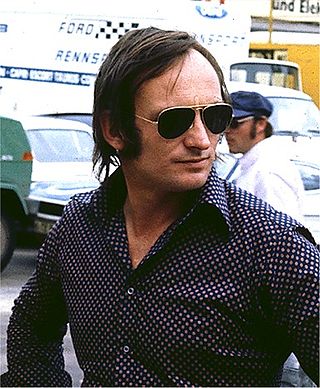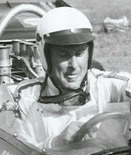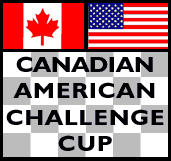Related Research Articles

Denis Clive Hulme was a New Zealand racing driver who won the 1967 Formula One World Drivers' Championship for the Brabham team. Between his debut at Monaco in 1965 and his final race in the 1974 US Grand Prix, he started 112 Grands Prix, resulting in eight victories and 33 podium finishes. He also finished third in the overall standing in 1968 and 1972.

Christopher Arthur Amon was a New Zealand motor racing driver. He was active in Formula One racing in the 1960s and 1970s, and is widely regarded as one of the best F1 drivers never to win a championship Grand Prix. His reputation for bad luck was such that fellow driver Mario Andretti once joked that "if he became an undertaker, people would stop dying". Former Ferrari Technical Director Mauro Forghieri stated that Amon was "by far the best test driver I have ever worked with. He had all the qualities to be a World Champion but bad luck just wouldn't let him be".
The Surtees Racing Organisation was a race team that spent nine seasons as a constructor in Formula One, Formula 2, and Formula 5000.

Graham Peter McRae was a racing driver from New Zealand.

Derek Reginald Bell is a British racing driver. In sportscar racing, he won the Le Mans 24 hours five times, the Daytona 24 three times and the World Sportscar Championship twice. He also raced in Formula One for the Ferrari, Wheatcroft, McLaren, Surtees and Tecno teams. He has been described by fellow racer Hans-Joachim Stuck as one of the most liked drivers of his generation.

John Cannon was a sports car racer, who competed under the banner of Canada, though he was born in London, U.K. He raced in the USRRC series, the CanAm Series and the L&M Continental Series.

The Canadian-American Challenge Cup, or Can-Am, was an SCCA/CASC sports car racing series from 1966 to 1974, and again from 1977 to 1987.

Formula 5000 was an open wheel, single seater auto-racing formula that ran in different series in various regions around the world from 1968 to 1982. It was originally intended as a low-cost series aimed at open-wheel racing cars that no longer fit into any particular formula. The '5000' denomination comes from the maximum 5.0 litre engine capacity allowed in the cars, although many cars ran with smaller engines. Manufacturers included McLaren, Eagle, March, Lola, Lotus, Elfin, Matich and Chevron.

The Tasman Series was a motor racing competition held annually from 1964 to 1975 over a series of races in New Zealand and Australia. It was named after the Tasman Sea which lies between the two countries. The Tasman Series races were held in January through to late February or early March of each year, during the Formula One off season, taking advantage of winter in the Northern Hemisphere to attract many top drivers to summer in the south. The Tasman Cup was the permanent trophy awarded to the winning driver.

Edmonton International Speedway, also known as Speedway Park, was a 251-acre (1.02 km2) multi-track auto racing facility located in the present Cumberland and Hudson neighbourhoods of Edmonton, Alberta, Canada. The facility featured a 1⁄4-mile (400 m) dragstrip, a 2.53-mile (4.07 km) 14-turn road course, and a 1⁄4-mile short oval. At its peak, it had capacity for over 30,000 fans.
The 1964 Tasman Series was an international motor racing series contested in New Zealand and Australia over eight races beginning on 4 January and ending on 2 March. It was the first Tasman Series. The series, which was officially known as the Tasman Championship for Drivers, was organised jointly by the Association of New Zealand Car Clubs Inc. and the Confederation of Australian Motor Sport with the winning driver awarded the Tasman Cup. The championship was open to racing cars using unsupercharged engines of up to 2,500 c.c. capacity.

The 1969 Tasman Series was a motor racing competition staged in New Zealand and Australia for cars complying with the Tasman Formula. The series, which commenced on 4 January 1969 and ended on 16 February 1969 after seven rounds, was the sixth annual Tasman Series. It was won by Chris Amon, driving a Dino 246 Tasmania.
The 1970 Tasman Series was a motor racing competition staged in New Zealand and Australia for cars complying with the Tasman Formula. It was the seventh Tasman Series, beginning on 3 January and ending on 22 February after seven races. The series was won by Graeme Lawrence of New Zealand, driving the Ferrari 246T that fellow New Zealander Chris Amon raced to win the 1969 Tasman Series.
The 1971 Tasman Series was a motor racing competition staged in New Zealand and Australia for cars complying with the Tasman Formula. The series, which began on 2 January and ended on 28 February after seven races, was the eighth annual Tasman Series. It was won by Graham McRae of New Zealand, driving a McLaren M10B Chevrolet.
The 1975 Tasman Series,, was a motor racing competition open to Racing Cars complying with the Tasman Formula. Contested over eight rounds in New Zealand and Australia beginning on 5 January and ending on 23 February, it was the twelfth and final Tasman Series. The series was organised jointly by the Motorsport Association of New Zealand and the Confederation of Australian Motorsport and was promoted as the Peter Stuyvesant International Series for the 1975 Tasman Championship.

The 1970 New Zealand Grand Prix was a race held at the Pukekohe Park Raceway on 10 January 1970. The race had 20 starters.

The Lola T332 was a race car designed and built by Lola Cars for use in Formula 5000 racing and made its racing debut in 1973. The T332 was successful around the globe with race victories in places such as Australia, the United Kingdom, New Zealand and the United States. The Lola commonly used the 5.0-litre Chevrolet V8 engine, though some competitors in Australia and New Zealand used the slightly cheaper and less powerful Australian made 5.0-litre Repco Holden V8.
David Oxton is a former New Zealand racing driver. Oxton spent the majority of his career racing open wheel cars in New Zealand and Australia but did drive touring cars late in his career.

The 1972 New Zealand Grand Prix was a race held at the Pukekohe Park Raceway on 8 January 1972. The race had 20 starters.

The 1975 New Zealand Grand Prix was a race held at the Pukekohe Park Raceway on 12 January 1975. The race had 20 starters.
References
- ↑ "AUTOSPORT INDUSTRIES LIMITED". New Zealand Companies Office. Retrieved 16 June 2024.
- ↑ "Significant Championship Wins". Lola Heritage. Archived from the original on 23 December 2017. Retrieved 9 January 2011.
- ↑ "Driver DB entry for Graeme Lawrence". Driver DB. Retrieved 8 December 2022.
- ↑ "McLAREN CAN AM REGISTRY". 7 March 2023. Retrieved 7 March 2023.
- ↑ "1970 Can-Am season, 1970". ClassicCars.